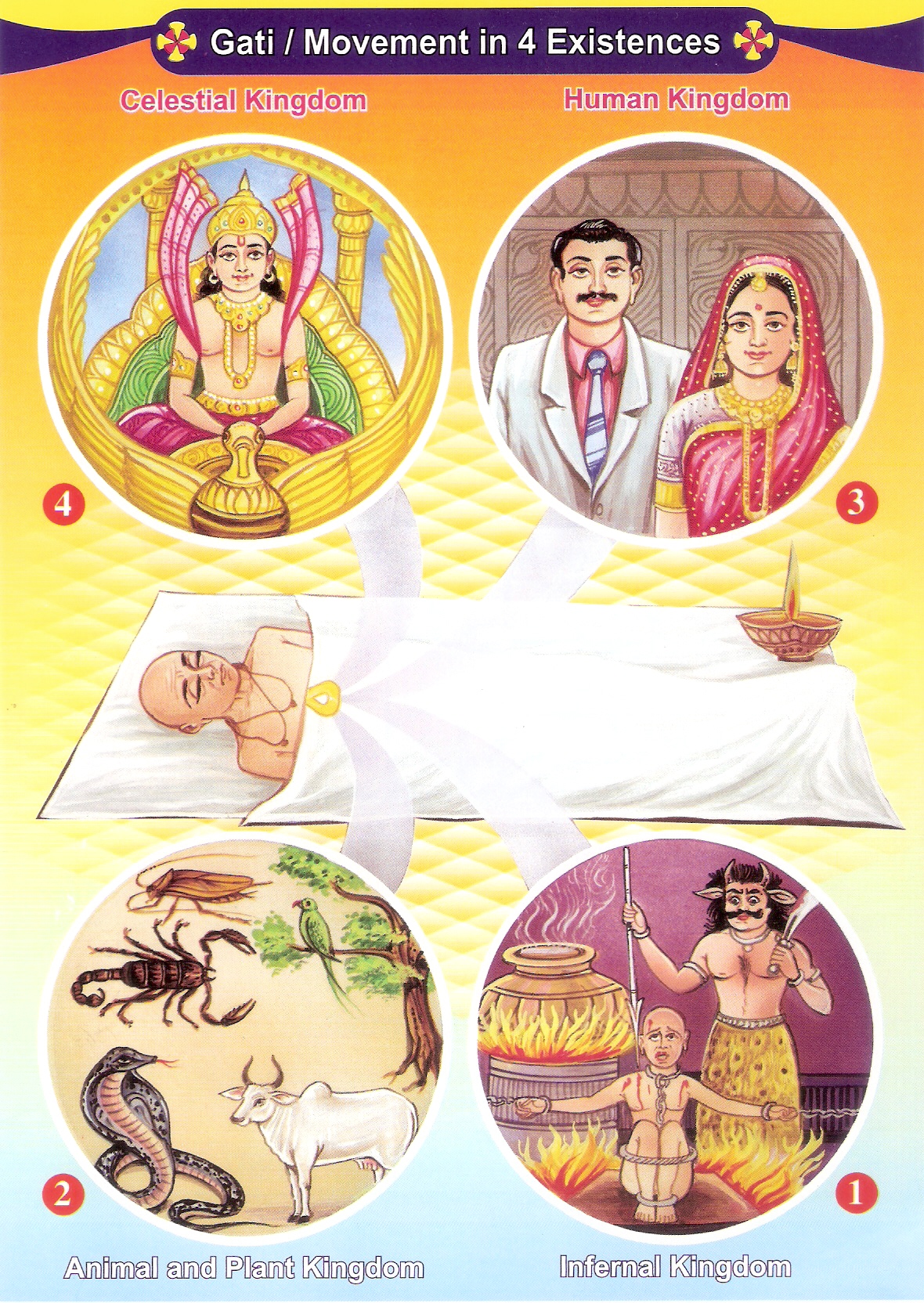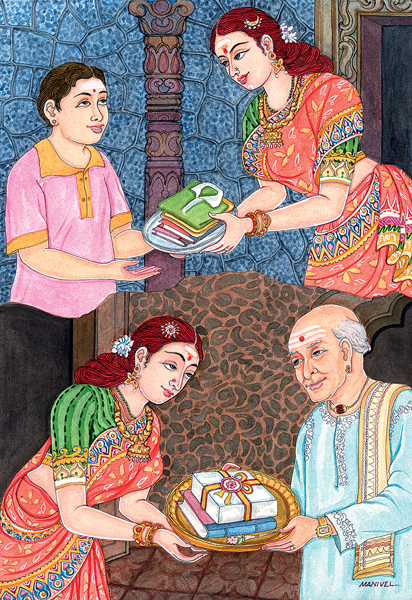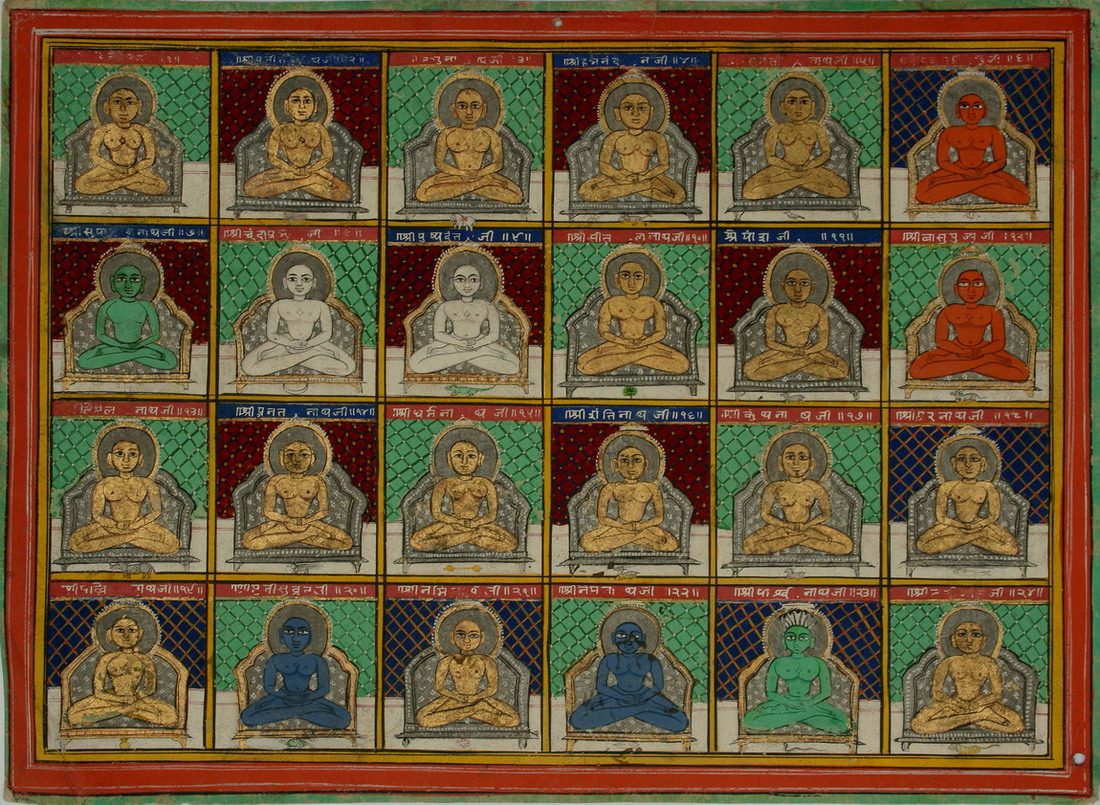|
Acharya Haribhadrasuri
Acharya Haribhadra Suri was a Śvetāmbara mendicant Jain leader, philosopher , doxographer, and author. There are multiple contradictory dates assigned to his birth. According to tradition, he lived c. 459–529 CE. However, in 1919, a Jain monk named Jinvijay pointed out that given his familiarity with Dharmakirti, a more likely choice would be sometime after 650. In his writings, Haribhadra identifies himself as a student of Jinabhadra and Jinadatta of the Vidyadhara Kula. There are several, somewhat contradictory, accounts of his life. He wrote several books on Yoga, such as the Yogadṛṣṭisamuccaya and on comparative religion, outlining and analyzing the theories of Hindus, Buddhists and Jains. Life The earliest story of his life say that Haribhadra was born in Dharmapuri and that he was an educated Brahmin who decided that he would become a pupil of anyone who could state a sentence which Haribhadra could not understand. After hearing a Jain nun named Yākinī Maha ... [...More Info...] [...Related Items...] OR: [Wikipedia] [Google] [Baidu] |
Jainism
Jainism ( ), also known as Jain Dharma, is an Indian religions, Indian religion whose three main pillars are nonviolence (), asceticism (), and a rejection of all simplistic and one-sided views of truth and reality (). Jainism traces its spiritual ideas and history through the succession of twenty-four , supreme preachers of ''dharma''. The first in the current time cycle is Rishabhadeva, who tradition holds lived millions of years ago; the 23rd is Parshvanatha, traditionally dated to the 9th century Common Era, BCE; and the 24th is Mahāvīra, Mahavira, who lived . Jainism is considered an eternal ''dharma'' with the guiding every time cycle of the Jain cosmology, cosmology. Central to understanding Jain philosophy is the concept of ''bhedavijñāna'', or the clear distinction in the nature of the soul and non-soul entities. This principle underscores the innate purity and potential for liberation within every Jīva (Jainism), soul, distinct from the physical and menta ... [...More Info...] [...Related Items...] OR: [Wikipedia] [Google] [Baidu] |
Indian Logic
The development of Indian logic dates back to the Chandahsutra of Pingala and '' anviksiki'' of Medhatithi Gautama (c. 6th century BCE); the Sanskrit grammar rules of Pāṇini (c. 5th century BCE); the Vaisheshika school's analysis of atomism (c. 6th century BCE to 2nd century BCE); the analysis of inference by Gotama (c. 6th century BC to 2nd century CE), founder of the Nyaya school of Hindu philosophy; and the tetralemma of Nagarjuna (c. 2nd century CE). Indian logic stands as one of the three original traditions of logic, alongside the Greek and the Chinese logic. The Indian tradition continued to develop through early to modern times, in the form of the Navya-Nyāya school of logic. Origins The Nasadiya Sukta of the ''Rigveda'' ( RV 10.129) contains ontological speculation in terms of various logical divisions that were later recast formally as the four circles of '' catuskoti'': "A", "not A", "A and 'not A'", and "not A and not not A". Medhatithi Gautama (c. 6th cen ... [...More Info...] [...Related Items...] OR: [Wikipedia] [Google] [Baidu] |
Yoga
Yoga (UK: , US: ; 'yoga' ; ) is a group of physical, mental, and spiritual practices or disciplines that originated with its own philosophy in ancient India, aimed at controlling body and mind to attain various salvation goals, as practiced in the Hindu, Jain, and Buddhist Buddhism, also known as Buddhadharma and Dharmavinaya, is an Indian religion and List of philosophies, philosophical tradition based on Pre-sectarian Buddhism, teachings attributed to the Buddha, a wandering teacher who lived in the 6th or ... traditions. Yoga may have pre-Vedic period, Vedic origins, but is first attested in the early first millennium BCE. It developed as various traditions in the eastern Ganges basin drew from a common body of practices, including Vedas, Vedic elements. Yoga-like practices are mentioned in the ''Rigveda'' and a number of early Upanishads, but systematic yoga concepts emerge during the fifth and sixth centuries BCE in ancient India's sannyasa, ascetic and ... [...More Info...] [...Related Items...] OR: [Wikipedia] [Google] [Baidu] |
Reincarnations
Reincarnation, also known as rebirth or transmigration, is the philosophical or religious concept that the non-physical essence of a living being begins a new lifespan in a different physical form or body after biological death. In most beliefs involving reincarnation, the soul of a human being is immortal and does not disperse after the physical body has perished. Upon death, the soul merely becomes transmigrated into a newborn baby or into an animal to continue its immortality. (The term "transmigration" means the passing of a soul from one body to another after death.) Reincarnation (''punarjanman'') is a central tenet of Indian religions such as Hinduism, Buddhism, Jainism, and Sikhism. In various forms, it occurs as an esoteric belief in many streams of Judaism, in certain pagan religions (including Wicca), and in some beliefs of the Indigenous peoples of the Americas and of Aboriginal Australians (though most believe in an afterlife or spirit world). Some ancient Gre ... [...More Info...] [...Related Items...] OR: [Wikipedia] [Google] [Baidu] |
Karma
Karma (, from , ; ) is an ancient Indian concept that refers to an action, work, or deed, and its effect or consequences. In Indian religions, the term more specifically refers to a principle of cause and effect, often descriptively called the principle of karma, wherein individuals' intent and actions (cause) influence their future (effect): Good intent and good deeds contribute to good karma and happier Reincarnation, rebirths, while bad intent and bad deeds contribute to bad karma and worse rebirths. In some scriptures, however, there is no link between rebirth and karma. In Hinduism, karma is traditionally classified into four types: Sanchita karma (accumulated karma from past actions across lifetimes), Prārabdha karma (a portion of Sanchita karma that is currently bearing fruit and determines the circumstances of the present life), Āgāmi karma (future karma generated by present actions), and Kriyamāṇa karma (immediate karma created by current actions, which may y ... [...More Info...] [...Related Items...] OR: [Wikipedia] [Google] [Baidu] |
Tirthankara
In Jainism, a ''Tirthankara'' (; ) is a saviour and supreme preacher of the ''Dharma (Jainism), dharma'' (righteous path). The word ''tirthankara'' signifies the founder of a ''Tirtha (Jainism), tirtha'', a fordable passage across ''Saṃsāra (Jainism), saṃsāra'', the sea of interminable birth and death. According to Jains, ''tirthankaras'' are the supreme preachers of ''dharma'', who have conquered ''saṃsāra'' on their own and made a path for others to follow. After understanding the true nature of the self or soul, the ''Tīrthaṅkara'' attains ''kevala jnana'' (omniscience). A Tirthankara provides a bridge for others to follow them from ''saṃsāra'' to ''moksha'' (liberation). In Jain cosmology, the wheel of time is divided into two halves, Utsarpiṇī', the ascending time cycle, and ''avasarpiṇī'', the descending time cycle (said to be current now). In each half of the cycle, exactly 24 ''tirthankaras'' grace this part of the universe. There have been infini ... [...More Info...] [...Related Items...] OR: [Wikipedia] [Google] [Baidu] |
Dharma
Dharma (; , ) is a key concept in various Indian religions. The term ''dharma'' does not have a single, clear Untranslatability, translation and conveys a multifaceted idea. Etymologically, it comes from the Sanskrit ''dhr-'', meaning ''to hold'' or ''to support'', thus referring to law that sustains things—from one's life to society, and to the Universe at large. In its most commonly used sense, dharma refers to an individual's moral responsibilities or duties; the dharma of a farmer differs from the dharma of a soldier, thus making the concept of dharma a varying dynamic. As with the other components of the Puruṣārtha, the concept of ''dharma'' is pan-Indian. The antonym of dharma is ''adharma''. In Hinduism, ''dharma'' denotes behaviour that is considered to be in accord with ''Ṛta''—the "order and custom" that makes life and universe possible. This includes duties, rights, laws, conduct, virtues and "right way of living" according to the stage of life or social posi ... [...More Info...] [...Related Items...] OR: [Wikipedia] [Google] [Baidu] |
Samyagdarsana
Jainism emphasises that ratnatraya (triple gems of Jainism) — the right faith (''Samyak Darshana''), right knowledge (''Samyak Gyana'') and right conduct (''Samyak Charitra'') — constitutes the path to liberation. These are known as the triple gems (or jewels) of Jainism and hence also known as ''Ratnatraya'' The Path to liberation According to Jainism, purification of soul and liberation can be achieved through the path of three jewels: ''Samyak darśana'' (Correct View), meaning faith, acceptance of the truth of soul (''jīva''); ''Samyak jnana'' (Correct Knowledge), meaning undoubting knowledge of the ''tattvas''; and ''Samyak charitra'' (Correct Conduct), meaning behavior consistent with the Five vows. Jain texts often add ''samyak tap'' (Correct Asceticism) as a fourth jewel, emphasizing belief in ascetic practices as the means to liberation (moksha). The four jewels are called ''moksha marg''. According to Jain texts, the liberated pure soul (''Siddha'') goes up to the ... [...More Info...] [...Related Items...] OR: [Wikipedia] [Google] [Baidu] |
Anekantavada
(, "many-sidedness") is the Jain doctrine about metaphysical truths that emerged in ancient India. It states that the ultimate truth and reality is complex and has multiple aspects and viewpoints. According to Jainism, no single, specific statement can describe the nature of existence and the absolute truth. This knowledge ('' Kevala Jnana''), it adds, is comprehended only by the Arihants. Other beings and their statements about absolute truth are incomplete, and at best a partial truth. All knowledge claims, according to the ''anekāntavāda'' doctrine must be qualified in many ways, including being affirmed and denied. Anekāntavāda is a fundamental doctrine of Jainism. The origins of ''anekāntavāda '' can be traced back to the teachings of Mahāvīra (599–527 BCE), the 24th Jain , and the predecessor Tirthankars. The dialectical concepts of ''syādvāda'' "conditioned viewpoints" and ''nayavāda'' "partial viewpoints" were expounded and illustrated from ''anekānta ... [...More Info...] [...Related Items...] OR: [Wikipedia] [Google] [Baidu] |
Nirvana
Nirvana, in the Indian religions (Jainism, Hinduism, Buddhism, and Sikhism), is the concept of an individual's passions being extinguished as the ultimate state of salvation, release, or liberation from suffering ('' duḥkha'') and from the cycle of birth and rebirth ('' saṃsāra''). In Indian religions, nirvana is synonymous with ''moksha'' and ''mukti''. All Indian religions assert it to be a state of perfect quietude, freedom, and highest happiness; liberation from attachment and worldly suffering; and the ending of ''samsara'', the cycle of existence.Gavin Flood, ''Nirvana''. In: John Bowker (ed.), '' Oxford Dictionary of World Religions'' However, non-Buddhist and Buddhist traditions describe these terms for liberation differently. In Hindu philosophy, it is the union of or the realization of the identity of Atman with Brahman, depending on the Hindu tradition. In Jainism, nirvana is also the soteriological goal, representing the release of a soul from karmic bondage ... [...More Info...] [...Related Items...] OR: [Wikipedia] [Google] [Baidu] |
Moksha
''Moksha'' (; , '), also called ''vimoksha'', ''vimukti'', and ''mukti'', is a term in Jainism, Buddhism, Hinduism, and Sikhism for various forms of emancipation, liberation, '' nirvana'', or release. In its soteriological and eschatological senses, it refers to freedom from '' saṃsāra'', the cycle of death and rebirth. In its epistemological and psychological senses, ''moksha'' is freedom from ignorance: self-realization, self-actualization and self-knowledge. In Hindu traditions, ''moksha'' is a central concept and the utmost aim of human life; the other three aims are ''dharma'' (virtuous, proper, moral life), '' artha'' (material prosperity, income security, means of life), and '' kama'' (pleasure, sensuality, emotional fulfillment). Together, these four concepts are called Puruṣārtha in Hinduism. In some schools of Indian religions, ''moksha'' is considered equivalent to and used interchangeably with other terms such as ''vimoksha'', ''vimukti'', '' kaivalya'' ... [...More Info...] [...Related Items...] OR: [Wikipedia] [Google] [Baidu] |









